
|
| Gneisses are formed at even higher metamorphic grades than schists. Gneisses have minerals large enough to be identified with the naked eye that have been segregated into roughly parallel bands or layers. These bands may be straight or tightly folded. Many gneisses are made of the same minerals as coarse-grained intrusive rocks such as granite or diorite. |
|
|
 |
|
|
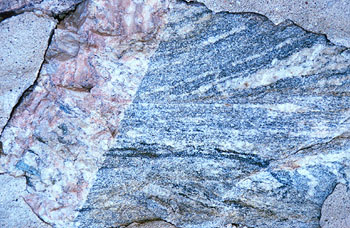 |
|
|
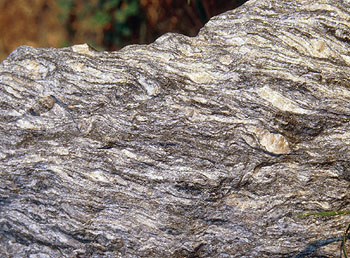 |
|
Click here for a super-close up so you can see how clearly these bands are made of different minerals, as opposed to the bands in quartzites and marbles, which are largely impurities. |
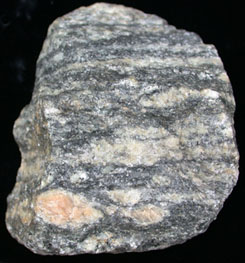 |
|
Click here for a super-close up to see the mineral textures. |
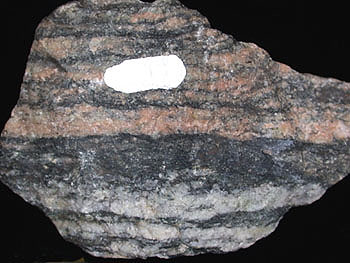 |
|
|
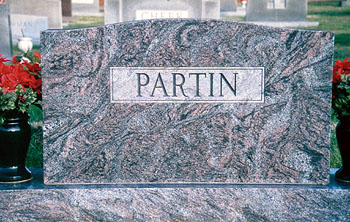 |
Return to GeoImage Home Page
![]()
|
|
|